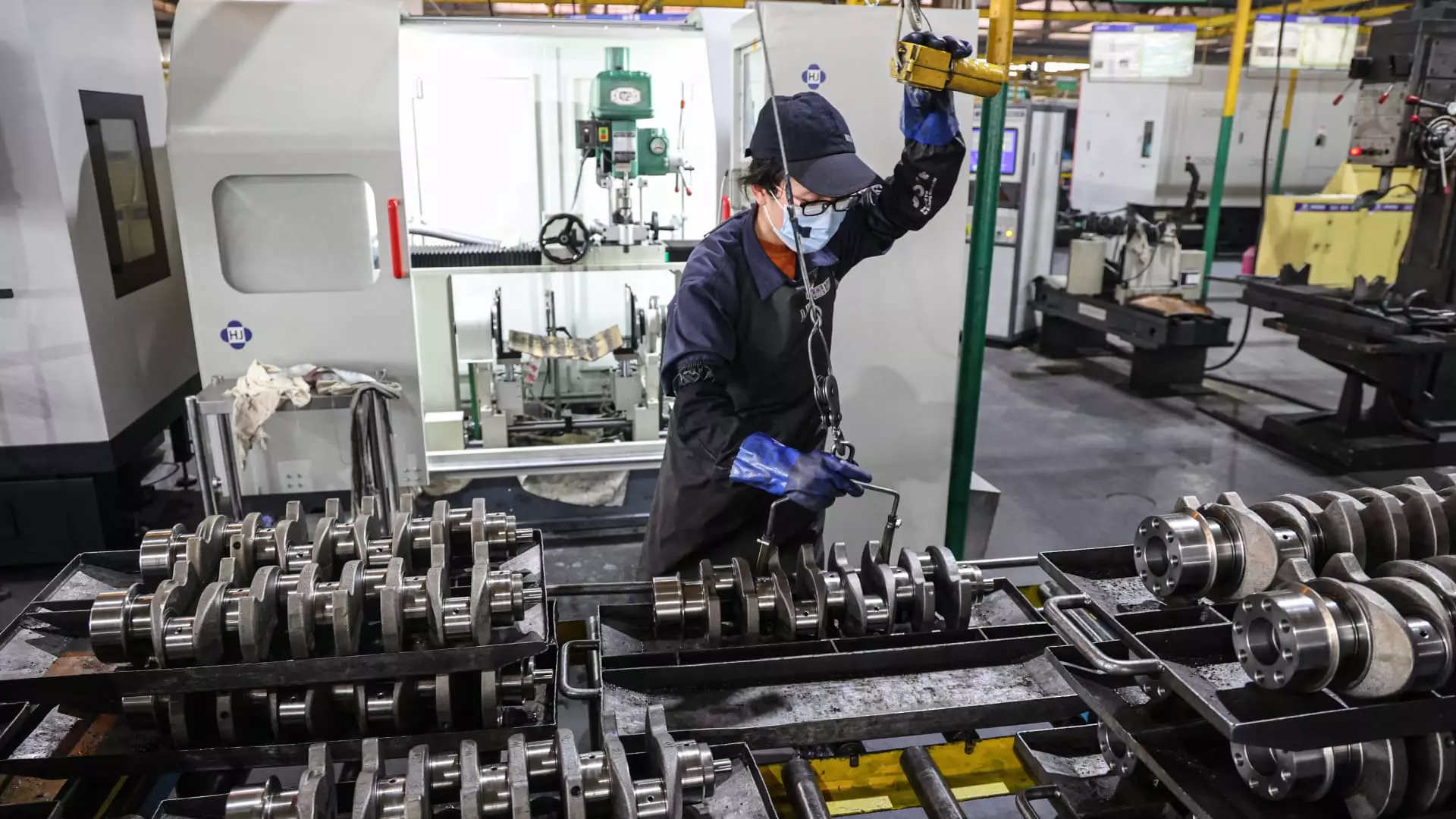China’s industrial landscape paints a picture that is both optimistic and precarious. Recent reports indicate a 3% rise in profits among major industrial firms for April, following a modest 2.6% increase in March. While this may appear to be a sign of recovery, the context in which these numbers exist is far from straightforward. A growth trajectory amid the backdrop of escalating tariffs from the United States presents a reality that merges resilience with uncertainty. The figures reflect an underlying tenacity but also expose the cracks in China’s economic foundation.
In the first four months of 2023, industrial profits grew by a mere 1.4% year-over-year. Under normal circumstances, such an uptick would be celebrated, yet the reality is that this growth is primarily driven by select sectors, particularly equipment and high-tech manufacturing. It begs the question: Is this growth sustainable or merely a knee-jerk reaction to temporary market conditions? The discrepancy raises alarm bells for anyone vested in the long-term health of the Chinese economy.
The Tariff War: A Double-Edged Sword
The imposition of exorbitant tariffs by the Trump administration, peaking at an astounding 145%, introduced a significant shock to the Chinese economy. While the recent agreement to reduce these rates to 51.1% might suggest a thaw in relations, the mutual imposition of tariffs has created an economic landscape resembling a trade war. Beijing’s retaliatory actions and the interim trade embargo have served only to complicate an already intricate economic dynamic.
Worryingly, the heavy toll appears to have been less severe than expected, as Chinese exports discovered new markets, showcasing a surprising agility in their supply chains. This adaptability is commendable but also raises questions about the long-term viability of such a strategy. The impression of strength in the face of adversity is a compelling narrative, yet underneath it lurks the persistent caution wielded by economists like Weining Yu from the National Bureau of Statistics. Insufficient demand and declining prices loom large, and these factors will inevitably temper any euphoria over rising profits.
Examining the Winners and Losers
Delving deeper into the data, the disparity between state-owned firms versus private and foreign-invested enterprises is telling. State-owned industries saw a staggering 4.4% decline in profits, contrasting sharply with the 4.3% growth observed in private companies. This divergence speaks volumes about the agility and innovation that private businesses can leverage in a turbulent economic landscape, while state-owned entities appear increasingly hamstrung by an outdated model that prioritizes stability over dynamism.
Notably, high-tech manufacturing has emerged as a beacon of hope, with reported profits climbing 9%. The impressive performance from sectors like biopharmaceuticals and aircraft manufacturing exemplifies China’s potential to innovate. However, even amidst this success, one must wonder how much of this growth is sustainable in the face of external economic pressures and domestic market limitations. For the policymakers obsessed with technological advancement, reliance on such specific sectors could be a double-edged sword.
Supply and Demand: A Growing Disparity
As industrial profits climb, retail sales appear to be faltering, growing at just 5.1%, underscoring a stark imbalance between supply and demand. This dissonance not only raises questions about consumer confidence but also highlights the essential disconnect at play in China’s economy. The gap between rising profits and stagnant retail growth signals a troubling trend that could set the stage for a more profound economic crisis if left unaddressed.
Amidst all this, programs designed to stimulate consumer spending—such as subsidies for trading in old appliances—have made a measurable difference for some manufacturers, yielding profit jumps of over 15%. Yet, the reliance on such measures feels like a temporary band-aid rather than a sustainable solution. It’s vital for policymakers to consider how to transition from short-term fixes to a more robust framework that encourages consistent consumer spending.
While China’s industrial sector showcases resilience in the face of adversity, the precarious balance of its growth raises substantial concerns. With significant forces at play, both internally and externally, the path ahead remains riddled with uncertainty. An economy built on such a delicate fabric needs a careful recalibration of priorities, policies, and strategies to ensure that growth is not just a fleeting success but a long-term reality.


Leave a Reply